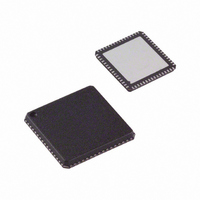AD6655BCPZ-105 Analog Devices Inc, AD6655BCPZ-105 Datasheet - Page 41

AD6655BCPZ-105
Manufacturer Part Number
AD6655BCPZ-105
Description
IC IF RCVR 14BIT 105MSPS 64LFCSP
Manufacturer
Analog Devices Inc
Datasheet
1.AD6655-125EBZ.pdf
(88 pages)
Specifications of AD6655BCPZ-105
Function
IF Diversity Receiver
Frequency
450MHz
Rf Type
Cellular, CDMA2000, GSM EDGE, W-CDMA
Secondary Attributes
32-Bit Numerically Controlled Oscillator
Package / Case
64-VFQFN, CSP Exposed Pad
Receiving Current
575mA
Frequency Range
450MHz
Rf Ic Case Style
LFCSP
No. Of Pins
64
Supply Voltage Range
1.7V To 1.9V
Operating Temperature Range
-40°C To +85°C
Frequency Max
650MHz
Data Rate Max
105Mbps
Rohs Compliant
Yes
Lead Free Status / RoHS Status
Lead free / RoHS Compliant
For Use With
AD6655-150EBZ - BOARD EVAL FOR 150MSPS AD6655AD6655-125EBZ - BOARD EVAL W/AD6655 & SOFTWARE
Lead Free Status / RoHS Status
Lead free / RoHS Compliant, Lead free / RoHS Compliant
ADC OVERRANGE AND GAIN CONTROL
In receiver applications, it is desirable to have a mechanism
to reliably determine when the converter is about to be clipped.
The standard overflow indicator provides after-the-fact infor-
mation on the state of the analog input that is of limited usefulness.
Therefore, it is helpful to have a programmable threshold below
full scale that allows time to reduce the gain before the clip actually
occurs. In addition, because input signals can have significant
slew rates, latency of this function is of major concern. Highly
pipelined converters can have significant latency. A good compro-
mise is to use the output bits from the first stage of the ADC for
this function. Latency for these output bits is very low, and overall
resolution is not highly significant. Peak input signals are typically
between full scale and 6 dB to 10 dB below full scale. A 3-bit or
4-bit output provides adequate range and resolution for this
function.
Using the SPI port, the user can provide a threshold above which
an overrange output is active. As long as the signal is below that
threshold, the output should remain low. The fast detect outputs
can also be programmed via the SPI port so that one of the pins
functions as a traditional overrange pin for customers who
currently use this feature. In this mode, all 14 bits of the converter
are examined in the traditional manner, and the output is high
for the condition normally defined as overflow. In either mode,
the magnitude of the data is considered in the calculation of the
condition (but the sign of the data is not considered). The threshold
detection responds identically to positive and negative signals
outside the desired range (magnitude).
FAST DETECT OVERVIEW
The AD6655 contains circuitry to facilitate fast overrange
detection, allowing very flexible external gain control imple-
mentations. Each ADC has four fast detect (FD) output pins
that are used to output information about the current state of
the ADC input level. The function of these pins is programmable
via the fast detect mode select bits and the fast detect enable bit
in Register 0x104, allowing range information to be output from
several points in the internal data path. These output pins can
also be set up to indicate the presence of overrange or underrange
conditions, according to programmable threshold levels. Table 21
shows the six configurations available for the fast detect pins.
Rev. A | Page 41 of 88
Table 21. Fast Detect Mode Select Bits Settings
Fast Detect
Mode Select bits
(Register 0x104[3:1])
000
001
010
011
100
101
1
2
ADC FAST MAGNITUDE
When the fast detect output pins are configured to output the
ADC fast magnitude (that is, when the fast detect mode select
bits are set to 0b000), the information presented is the ADC
level from an early converter stage with a latency of only two
clock cycles in CMOS output modes. In LVDS output mode,
the fast detect bits have a latency of six cycles in all fast detect
modes. Using the fast detect output pins in this configuration
provides the earliest possible level indication information. Because
this information is provided early in the datapath, there is signifi-
cant uncertainty in the level indicated. The nominal levels, along
with the uncertainty indicated by the ADC fast magnitude, are
shown in Table 22. Because the DCO is at one-half the sample
rate, the user can obtain all the fast detect information by sampling
the fast detect outputs on both the rising and falling edge of
DCO (see Figure 2 for timing information).
Table 22. ADC Fast Magnitude Nomimal Levels
with Fast Detect Mode Select Bits = 000
ADC Fast
Magitude on
FD[3:0] Pins
0000
0001
0010
0011
0100
0101
0110
0111
1000
The fast detect pins are FD0A/FD0B to FD3A/FD3B for the CMOS mode
configuration and FD0+/FD0− to FD3+/FD3− for the LVDS mode
configuration.
See the ADC Overrange (OR) and Gain Switching sections for more
information about OR, C_UT, F_UT, F_LT, IG, and DG.
Nominal Input
Magnitude
Below FS (dB)
<−24
−24 to −14.5
−14.5 to −10
−10 to −7
−7 to −5
−5 to −3.25
−3.25 to −1.8
−1.8 to −0.56
−0.56 to 0
Information Presented on
Fast Detect (FD) Pins of Each ADC
FD[3]
OR
OR
ADC fast magnitude (see Table 22)
(see Table 24)
(see Table 24)
magnitude
ADC fast magnitude
magnitude
ADC fast
ADC fast
(see Table 23)
FD[2]
C_UT
F_UT
Nominal Input
Magnitude
Uncertainty (dB)
Minimum to −18.07
−30.14 to −12.04
−18.07 to −8.52
−12.04 to −6.02
−8.52 to −4.08
−6.02 to −2.5
−4.08 to −1.16
−2.5 to FS
−1.16 to 0
FD[1]
OR
C_UT
F_UT
IG
AD6655
FD[0]
OR
F_LT
F_LT
F_LT
DG
1, 2
















